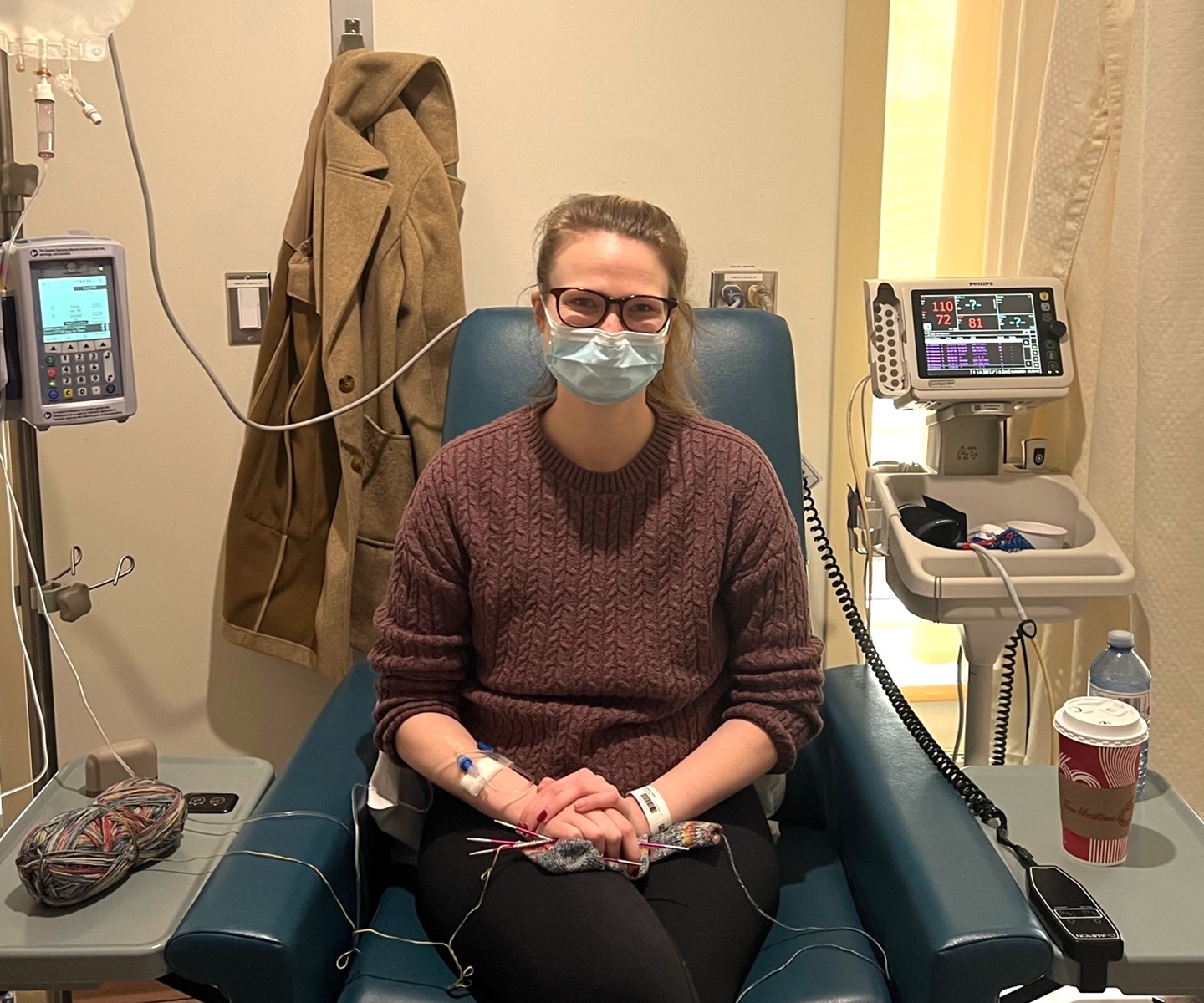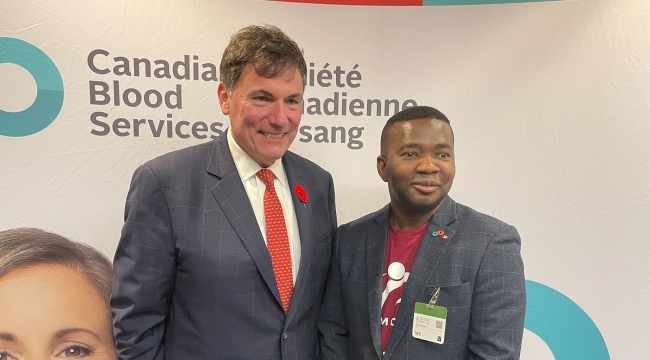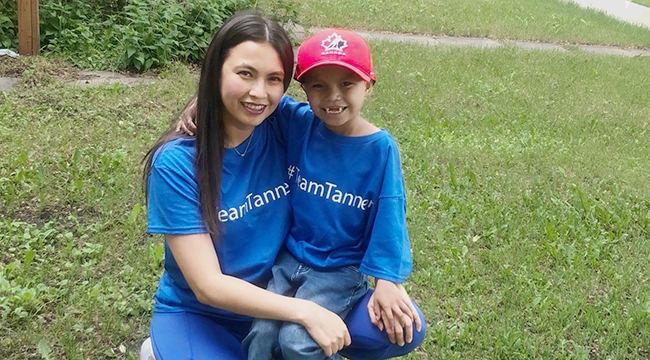‘This newfound control over my life is a big deal’

Medication made from plasma, a blood component, has made regular emergency room visits a thing of the past for Emily Ois
Every four to five weeks, Emily starts her morning routine several hours earlier than usual and makes her way to Royal Victoria Health Centre in Barrie, Ont.
Equipped with her latest knitting project in one hand and a big cup of coffee in the other, she receives a large infusion at the hospital over the course of about six to eight hours. The infusion is of immunoglobulin, a specialized medication made from plasma — the straw-coloured component of blood that makes up most of its volume. Every dose is made through a process that pools plasma from thousands of people, all of whom Emily credits as lifesavers.
“It allows me the freedom to live my life again,” she says. “Considering that five years ago, I felt wellness slipping through my hands every day, this newfound control over my life is a big deal.”
Emily is one of thousands of patients in Canada who rely on immunoglobulins, the plasma protein products for which demand is growing fastest. For her and many others, there is no other treatment option, and the number of conditions treated with immunoglobulins continues to grow.
‘I hit the pause button on my life’
Before starting treatment with immunoglobulins, Emily had respiratory and skin infections so often, she lost count. She visited the emergency room so frequently that she was on a first-name basis with almost everyone who worked there.
In her mid-twenties, as doctors struggled even to find a diagnosis, “I hit the pause button on my life,” Emily recalls.
“I had to close my friendship circle and even limit the amount of time with my loved ones, all in the name of avoiding chronic illness,” she says. “But despite my best efforts, I was still constantly sick. It was becoming so disruptive to my daily life that I was almost left without work.”
After years of managing illness after illness, Emily was finally referred to a hematologist who ran a blood test that measured antibodies essential to fighting common germs, viruses and bacteria. Normally, these are abundant in blood plasma.
However, the hematologist found that Emily had undetectable levels of a particular antibody called Immunoglobulin A (IgA). Her exact diagnosis was Common Variable Immunodeficiency with selective IgA deficiency. Bottom line: her immune system was in crisis.
Monthly immunoglobulin infusions begin
“As soon as I started treatment, my family noticed a difference. I gained weight back, and energy. It started working so quickly,” marvels Emily.
It’s now been almost three years since Emily started her monthly visits to the hospital to receive immunoglobulin infusions — or what she calls her “antibuddies” — to boost her immune system.
This spring, she expects to be able to receive her medication at home, in an injectable form she can deliver herself every two weeks. That’ll mean even greater freedom, all thanks to plasma donors, advocacy from her specialist and the medical team who have all helped her get this far.

Why increasing the number of plasma donors in Canada matters
Emily knows there are likely many other people in Canada who are struggling as she once did, and discover that immunoglobulins are the answer. After all, the number of conditions that medication made from plasma can treat is growing, and demand is increasing worldwide.
Canadian Blood Services extracts plasma from donations of whole blood, but also from plasma donations. Plasma donors give through “plasmapheresis,” which removes the plasma portion of their blood while returning other blood components to their body during the donation process. To continue meeting the needs of patients in Canada, Canadian Blood Services is increasing plasma collection, including at several new dedicated plasma donor centres. Plasma donors may be eligible to donate as often as once a week.
Through regular access to this life-changing plasma therapy, Emily’s been able to embrace the simple pleasures and milestones that others might take for granted — getting to start her corporate career, spending a birthday surrounded by others, tackling a new knitting project, even giving her young nephew a big hug without worrying too much about germs.
As Emily puts it, “plasma products and donors who make them possible have given me all these moments and more. If I could give every one of them a hug to thank them for making such a selfless decision, I would.”


